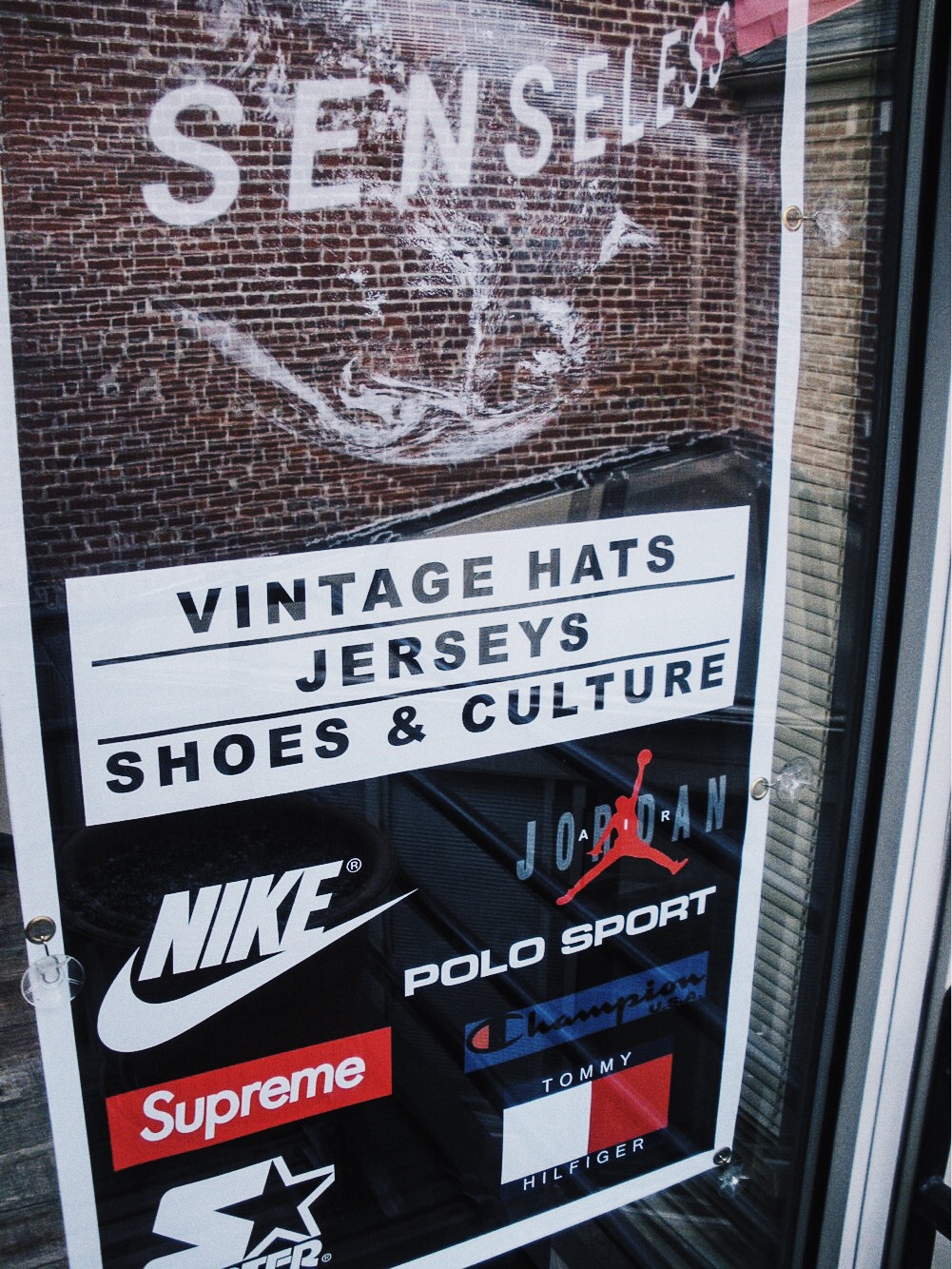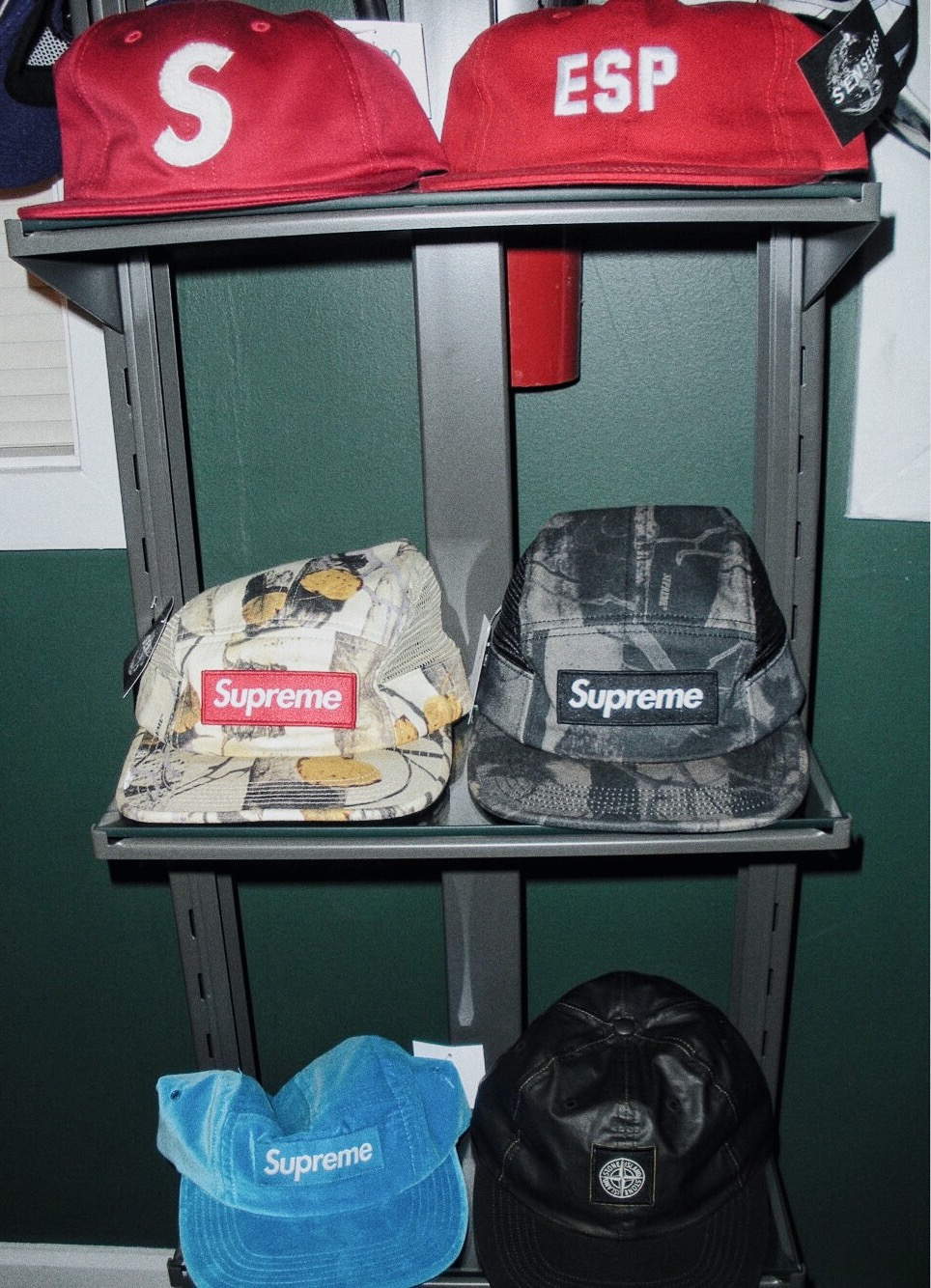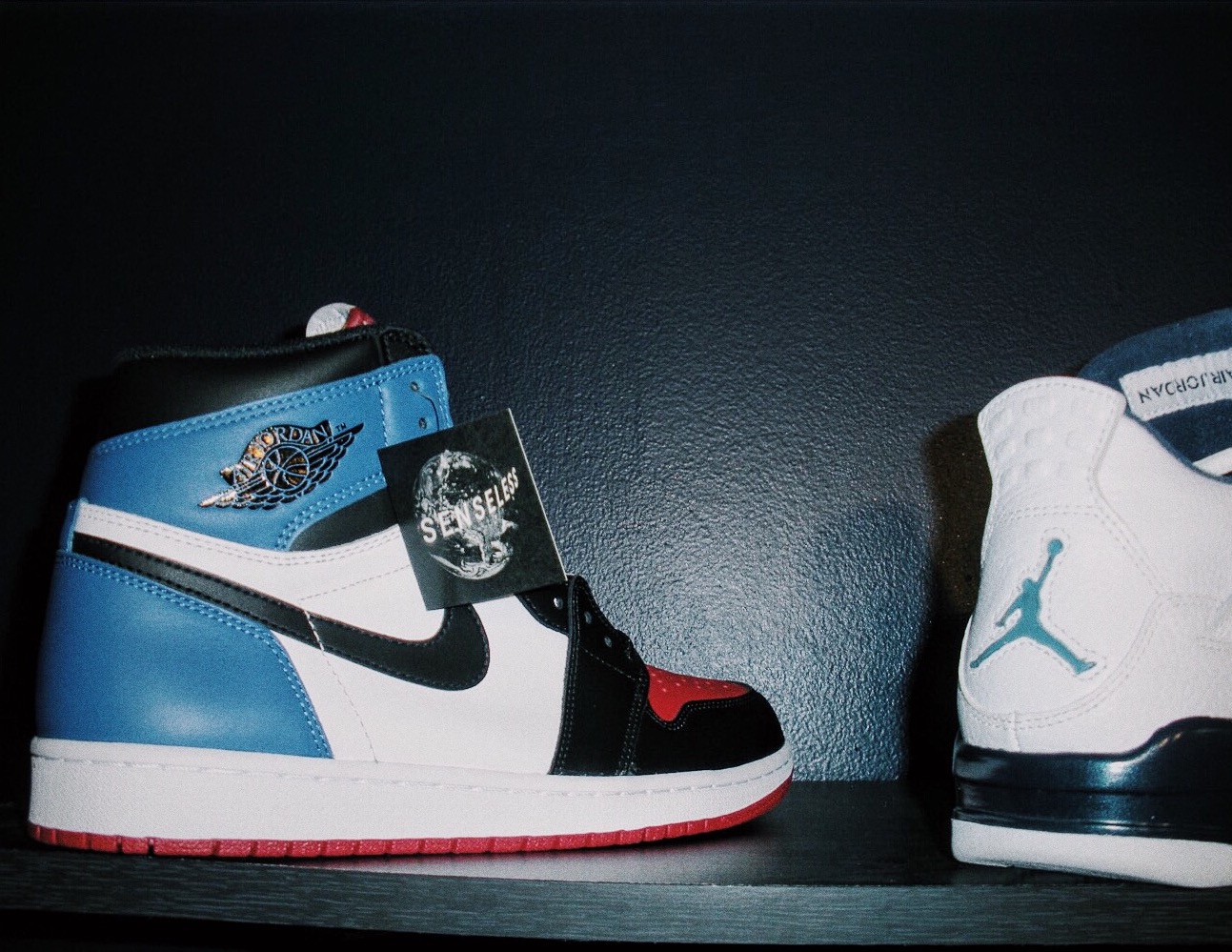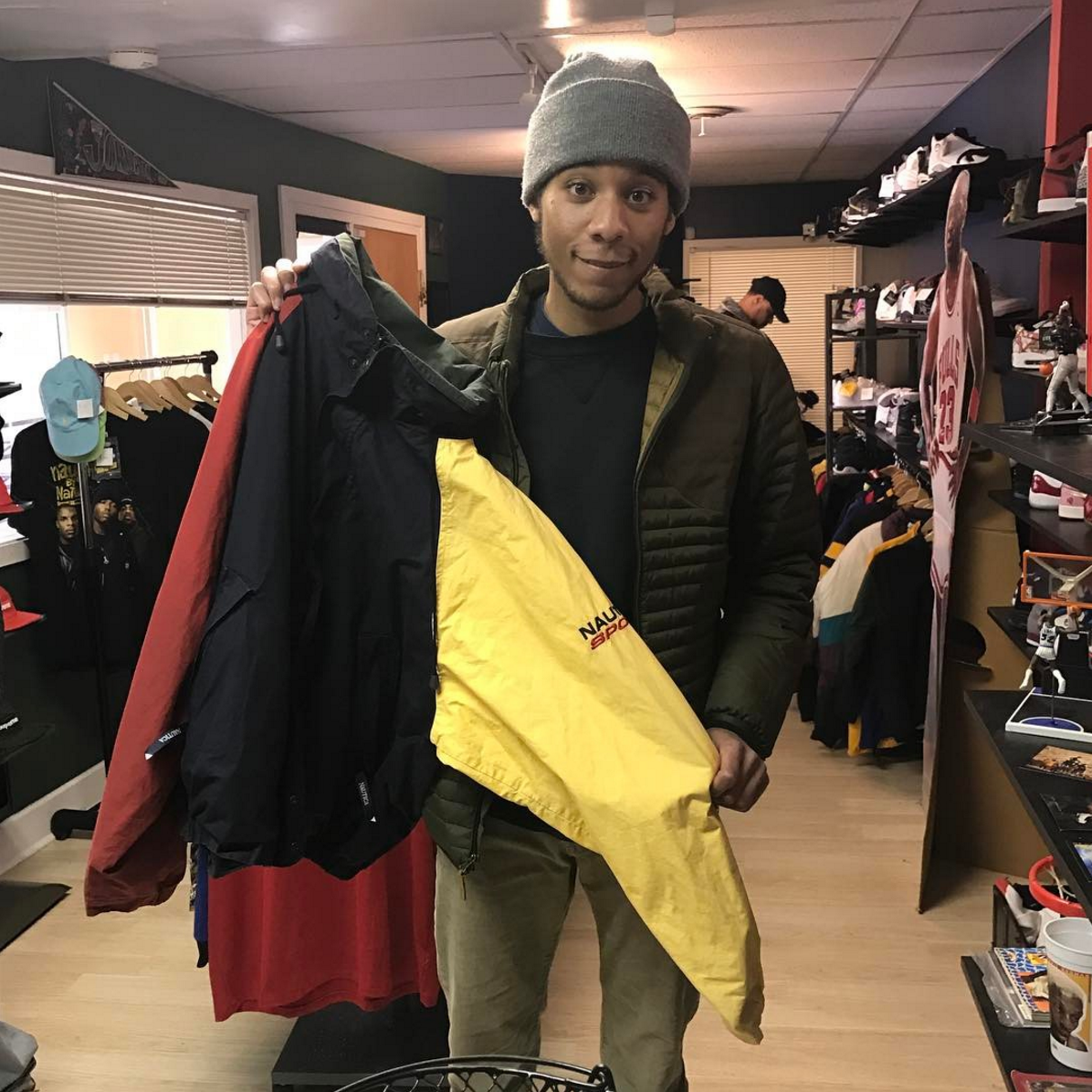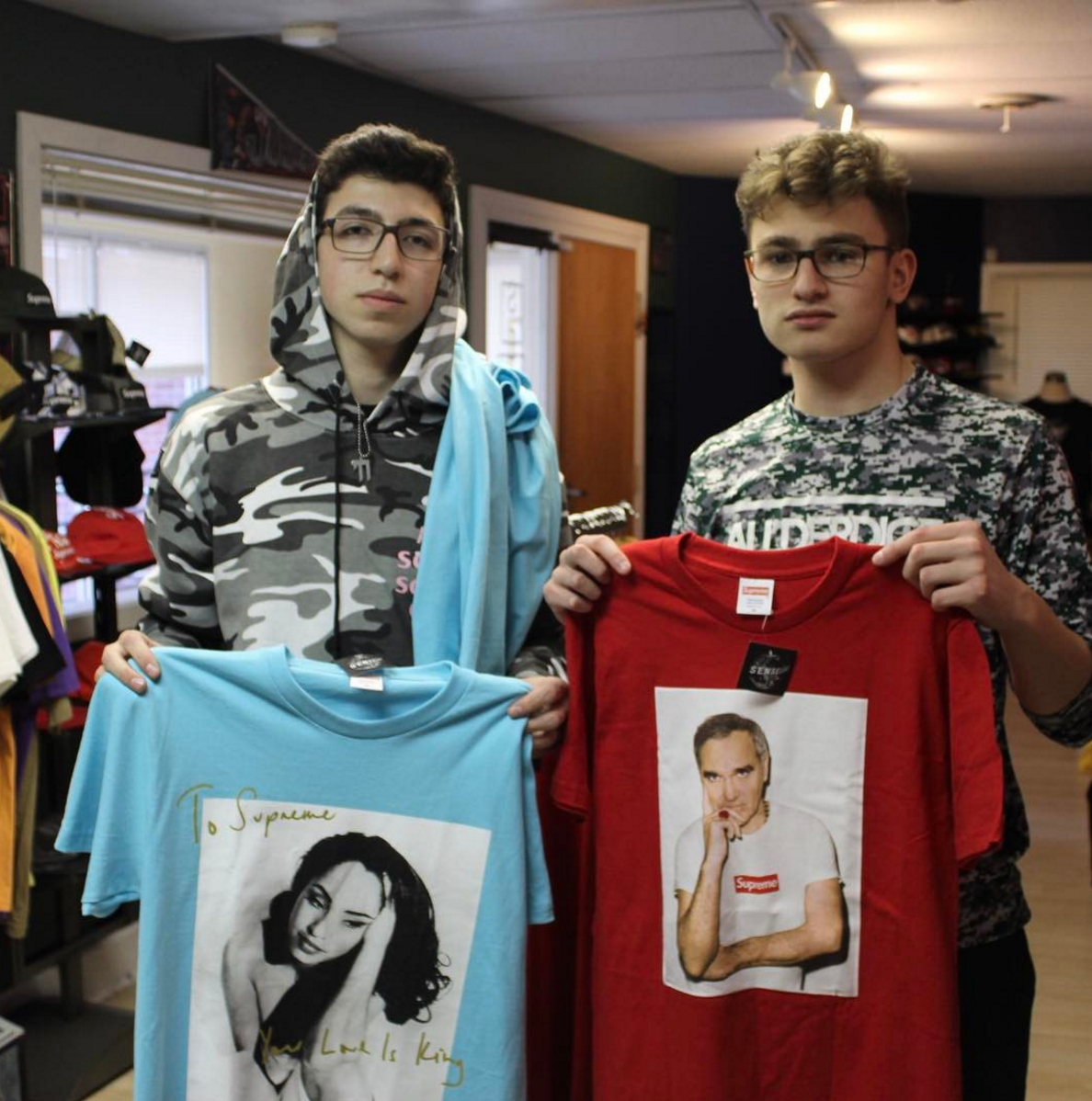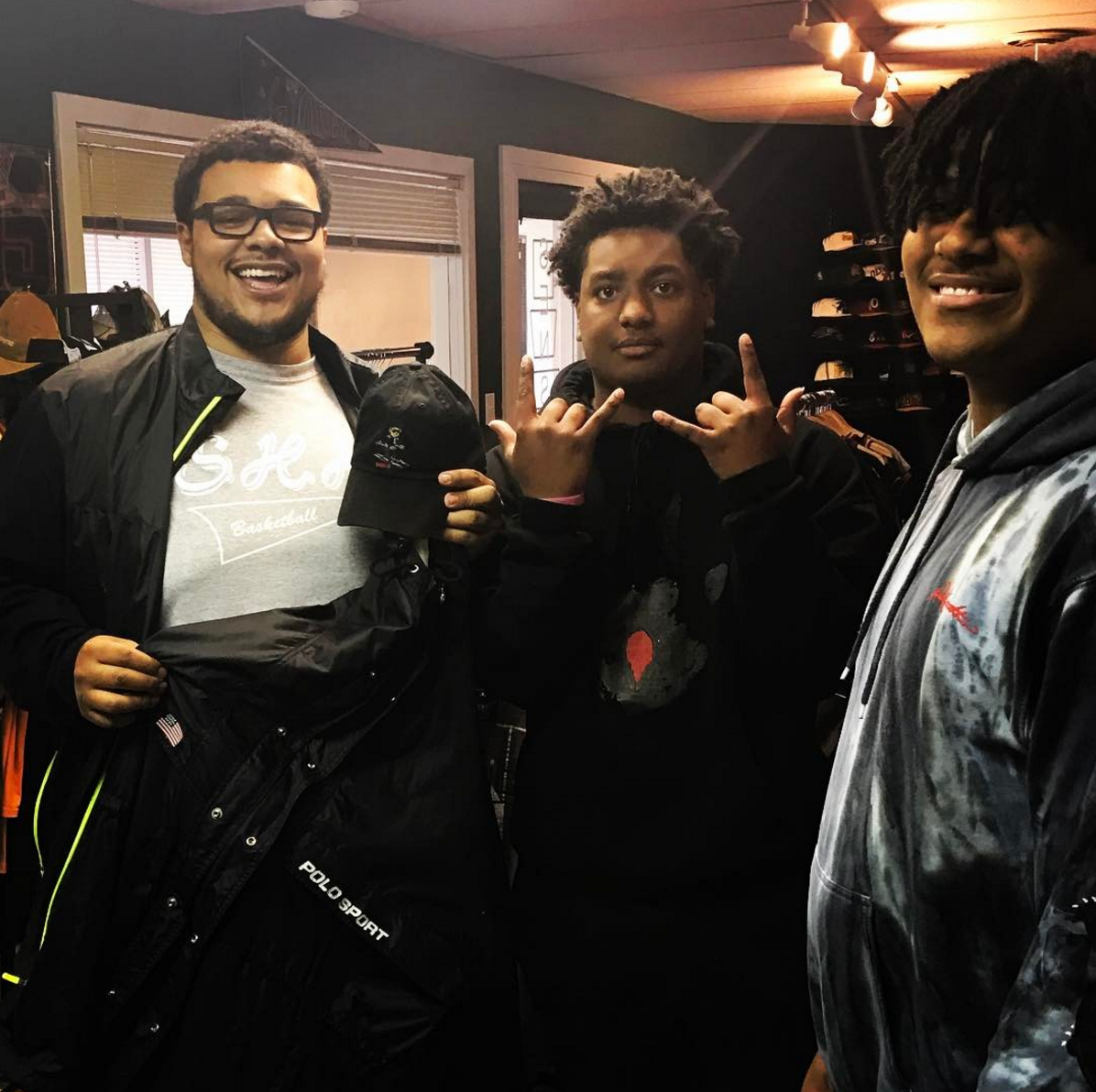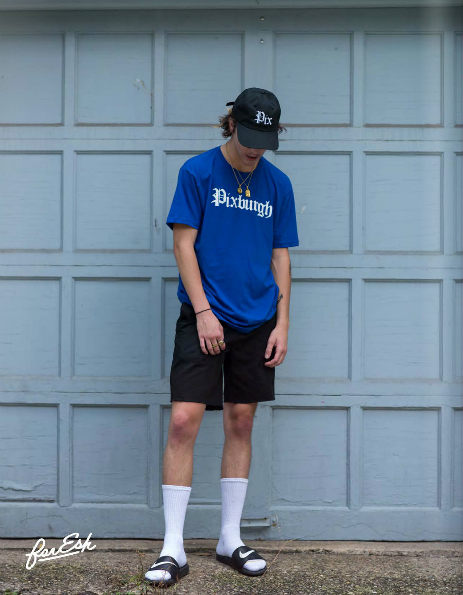Rome and Javed of Senseless - photograph by Alex Young
"It's a barbershop vibe," Javed said of his Pittsburgh-based clothing store, Senseless. He owns and operates Senseless with his equal, younger brother Rome. An attention to community adds to the store's curated shopping experience.
The last time I was at Senseless, Linwood, a local hip-hop artist, stopped in with his crew to chop it up with Javed, who is also a figure in the 'Burgh's rap community. Moments later, Rome's Tidal music account displayed on the TV in the back of the shop next to Kermit the Frog's Supreme portrait, ill beats from Kendrick Lamar's new "The Heart Part 4" played to fresh ears. We talked about Kendrick sending shots at Drake, stopping the Canadian's momentum.
Senseless' atmosphere works for streetwear consumers and as a spot to hang out with people who can relate to each other. "People like us, people that respect things," Javed said.
Shelf at Senseless
Additionally, vintage apparel and premium brands, like Guess, Jordan, and Supreme, attract informed shoppers. Casual run-ins with creative modern mavericks, shop talk about sub-culture heroes like vintage wear miners Round Two, and overall appreciation for popular media and entertainment makes Senseless a destination for youth in the Steel City.
“Taste with clothes and taste with music go hand in hand. Pop culture, bro.”
Natives of the Hill District, 22-year-old Javed and 20-year-old Rome began pushing their stylish tastes with sneakers. Throughout their teenage years, they sold retro Jordans on eBay and Instagram. Their online inventory made Javed and Rome relevant clothing vendors, and their interests in hip-hop from the '90s and early 2000s made their clothing selection much more refined.
The brothers had the idea for a brick and mortar store in the late spring of 2016. Authenticity features as Senseless' best asset to complement their clothing collection.
"We aren't in it to make money. We are just trying to change the culture and bring something different to Pittsburgh," Rome said. "That money shit is going to come and go. We want the connections, knowing people around the city," Javed continued.
People who frequent or follow Senseless become familiar with a local network of like-minded people. Javed introduced me to some members of his Serene rap collective when songs from Retrorosser and Jet hit in the background during our initial interview. The store's Instagram account features various photos of proud buyers of hip clothing. The photos clearly identify Senseless' youthful target market.
"You gotta understand the market and create a melting pot for other artists," Javed said.
Another way how Senseless capitalizes off the young market is with their prices. "If you don't shop with us you don't have any sense," Javed said. "No store in the city can beat our prices for what we offer." Don't be senseless and buy thousand dollar Yeezys from other consignment stores in the 'Burgh when you could get them from Senseless for a few hundred. "We don't want to play with anybody's money," Rome said.
While Javed and Rome conduct smart business sense, they are role models for young black minds in the city because they prove to individuals that "we can own shit," Javed said. By owning their own business, they advance the mindsets of "normal niggas our age who come through the store and just think we work here."
Although the boys find a sustainable business at their North Side location, they are looking to move the Senseless storefront to areas like Downtown, East Liberty, or the South Side. They want to attract larger foot traffic and have a larger space to host events that would complement the future Senseless Records.
For now, Javed and Rome can hang their hats on creating an atmosphere that connects people with real appreciations for popular culture. "Everybody looking for Senseless," Javed said.
Senseless
901 Western Avenue
Pittsburgh, PA 15233




